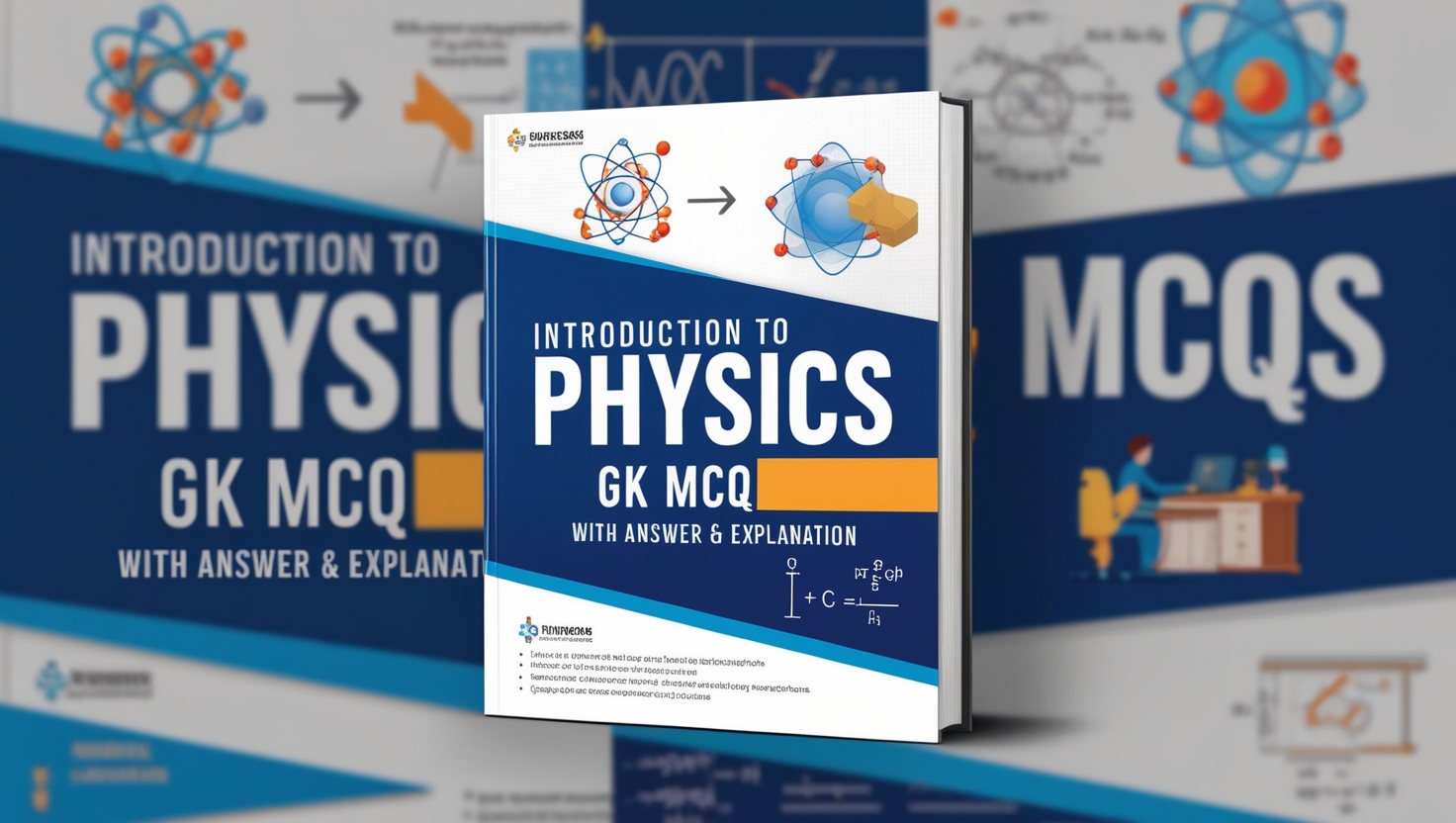
Welcome to the “Introduction to Physics GK MCQ” guide, designed to help you master fundamental concepts in physics through multiple-choice questions. This comprehensive collection of questions, complete with detailed answers and explanations, will provide you with a strong foundation for exams and competitive tests. Whether you’re a student or an enthusiast, these MCQs are tailored to improve your understanding and enhance your general knowledge in physics.
1. Electron microscope works on which of the following principles?
- Optical interference
- Wave Nature of electrons
- Motion of charged particles in electromagnetic fields
- Faraday’s Law of Electromagnetic Induction
Show Answer
Answer: Wave Nature of electrons
Electron microscope works on the principle of Wave Nature of electrons. Electron microscopes use an electron beam instead of visible light and an electron detector instead of our eyes. The wave nature of electrons allows for visualisation at very small scales.
2. Who among the following is credited for the Corpuscular theory of light?
- Isaac Newton
- Christiaan Huygens
- Albert Einstein
- James Clerk Maxwell
Show Answer
Answer: Isaac Newton
The Corpuscular theory of light was given by Isaac Newton. It was later replaced by Huygens’ wave theory when it failed to adequately explain the diffraction, interference, and polarisation of light. Subsequent theories, including Planck’s quantum theory and de-Broglie’s Dual-Theory, further refined our understanding of light.
3. Which of the following is/are part of Classical Physics?
- Optics
- Thermodynamics
- Both A and B
- None
Show Answer
Answer: Both A and B
Classical Physics includes the study of phenomena involving objects of finite size on both terrestrial and astronomical scales. It encompasses subjects like Optics and Thermodynamics, along with Mechanics and Electrodynamics.
4. What is the range of the Strong Nuclear force?
- Infinite
- Very short Subnuclear size
- Very short Nuclear size
- None
Show Answer
Answer: Very short Nuclear size
The range of Strong Nuclear force is very short, approximately the size of the nucleus (10^-15m). The Strong Nuclear force operates among Nucleons and heavier elementary particles. Its strength is about 10^38 times stronger than the gravitational force.
5. Which of the following is not a valid conservation law of classical Physics?
- Law of conservation of energy
- Law of conservation of current
- Law of conservation of angular momentum
- Law of conservation of charge
Show Answer
Answer: Law of conservation of current
The following laws are dealt with in classical physics: 1. Law of conservation of energy 2. Law of conservation of angular momentum 3. Law of conservation of linear momentum 4. Law of conservation of charge
6. Optical Fibre technology works on which of these principles of Physics?
- Bernoulli’s Principle
- Newton’s Law of Motion
- Total internal reflection of Light
- Photoelectric Effect
Show Answer
Answer: Total internal reflection of Light
Optical Fibre technology works on the principle of Total internal reflection of Light. It helps in transmitting light signals from one place to another with negligible loss of energy, enabling the transmission of more signals than copper cables.
7. By how many times are the Electrostatic forces stronger than the Gravitational Forces for a fixed distance?
- 10²
- 10³⁶
- 10¹²
- 2
Show Answer
Answer: 10³⁶
Electrostatic forces are 10^36 times stronger than the Gravitational Forces for a fixed distance. Electrostatic forces may be attractive or repulsive depending upon the charges. They are conservative forces and obey the inverse square law.
8. The force that binds the neutrons and protons in a nucleus is called as:
- Weak Nuclear Force
- Strong Nuclear Force
- Electromagnetic Force
- Gravitational Force
Show Answer
Answer: Strong Nuclear Force
Strong Nuclear Force is the force that binds the neutrons and protons together in a nucleus. Nuclear forces are the strongest forces in nature, being 10^38 times stronger than gravitational forces. They have the shortest range and operate within the nucleus only.
9. Who among the following is credited to work for the unification of electricity, magnetism, and optics field of Physics?
- James Clerk Maxwell
- Michael Faraday
- Haris Christian Oersted
- Isaac Newton
Show Answer
Answer: James Clerk Maxwell
James Clerk Maxwell made the efforts for the unification of electricity, magnetism, and optics field of Physics. He showed that light is an electromagnetic wave. James Clerk Maxwell was a Scottish mathematician and physicist known for his work on electromagnetism and the behaviour of gases.
10. Who gave the Theory of Relativity?
- Albert Einstein
- Isaac Newton
- Archimedes
- Galileo Galilei
Show Answer
Answer: Albert Einstein
Albert Einstein was the founder of the Theory of Relativity. According to Einstein’s theory, mass m is equivalent to energy E given by the relation E = mc^2 where c is the speed of light in vacuum. Albert Einstein was awarded the 1921 Nobel Prize in Physics for his contribution to the field of Theoretical Physics.


